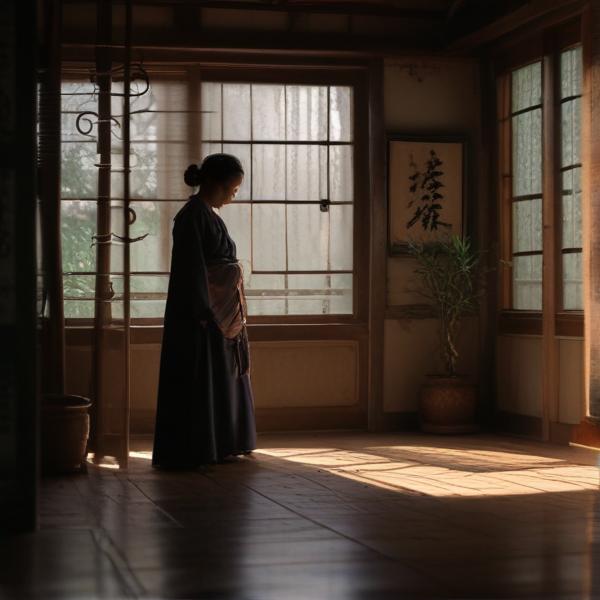基本信息 (Basic Information)
含义与用法 (Meanings & Usage)
中文核心释义 (Core Chinese Meaning): 装扮、打扮、假装成某种身份或样子。
英文核心释义 (Core English Meaning): to disguise, to dress up as, to play the part of
象形意义 / 为何这么写 (Pictographic Meaning / Writing Rationale)
文言文释义 (Classical Chinese Meaning)
与现代意义相近,主要指打扮、装饰,有时也用作‘假装’之意。Similar to modern meaning, mainly referring to dressing up, adorning, or sometimes pretending.
深入学习 (In-depth Study)
字源故事 (Origin Story)
字形演变 (Character Evolution)
常用词语和例句 (Common Words & Examples)
打扮 (to dress up; to make up; appearance)
她今天打扮得很漂亮。
Eng: She dressed up beautifully today.
装扮 (to disguise; to decorate or adorn)
他的装扮很有创意。
Eng: His costume is very creative.
扮演 (to play the role of; to act as)
他在剧中扮演主角。
Eng: He plays the leading role in the play.
相关成语 (Related Idioms)
相关成语信息待补充。Related idiom information pending.
多语言翻译 (核心释义) (Translations (Core Meaning))
- French: se déguiser, jouer (un rôle)
- German: verkleiden, spielen (eine Rolle)
- Spanish: disfrazarse, actuar (como)
- Italian: travestirsi, interpretare (un ruolo)
- Portuguese: disfarçar, interpretar (um papel)
- Russian: притворяться, переодеваться, играть роль
- Arabic: يتنكر، يؤدي دور
- Persian: تقلید کردن ، نقش بازی کردن
- Dutch: zich verkleden, een rol spelen
- Polish: przebierać się, grać (rolę)
- Vietnamese: cải trang, đóng vai
- Ukrainian: маскуватися, грати роль
视频学习资源 (Video Learning Resources)
通过以下链接在热门视频网站搜索 "扮" 的更多讲解:
Search for more explanations of "扮" on popular video sites:
- 在 Bilibili.com 搜索 "扮 字源 说文解字" (Search on Bilibili)
- 在 YouTube.com 搜索 "扮 character origin etymology" (Search on YouTube)
网络参考 (Web References for "扮") ()
网络内容摘要 (Web Content Summary):
核心含义与字源: “扮”主要表示“装扮、打扮”,即通过改变外观(常指用手整理、涂抹等动作)来美化或伪装自己。字形属于形声字,从“手”(表示与手的动作相关),声旁为“分”。有趣的是,有观点认为“扮”可以理解为“手+粉”,表示“用手往脸上抹粉”。 Core Meaning & Etymology: "扮" primarily means "to dress up, disguise, or adorn oneself," especially by changing one’s appearance. Structurally, it is a phono-semantic compound: the "hand" radical implies an action done by hand, while "分" acts as the phonetic part. Some interpret it as "hand + powder," hinting at using one’s hand to apply powder to the face.
- 常用搭配: 常见词语有“打扮”(dress up)、“扮演”(to play a role, to act)。 Common Collocations: Frequently used in words such as “打扮” (to dress up) and “扮演” (to play a role/act).
- 易混点: “扮”有时易与“伴”(companion)、“拌”(to mix)混淆。注意字形和含义的区别。 Common Confusions: Often confused with “伴” (companion) and “拌” (to mix). Pay attention to the differences in form and meaning.
- 趣味文化: 在中国传统戏曲中,演员“扮相”指其化妆、服饰等舞台形象。 Cultural Note: In traditional Chinese opera, “扮相” refers to an actor’s makeup, costume, and overall stage persona.
目前未找到与“扮”相关的著名成语。 No famous idioms directly related to "扮" found.
汉字"扮"的起源、演变过程-汉字字源辞典
汉字字源辞典收录7747条汉字词条,基本涵盖了常见汉字的字源解析,是汉字研究的必备工具。 ... 海恩先生,扮字可否理解为"手+粉",表示用手向脸上抹粉呢? ...
扮字形演变字源_汉字「扮」_扮的甲骨文_扮的金文_金文编_甲骨文编
楷書同篆文。字從「手」為義符,表示是與手有關的動作;從「分」為聲符,不兼義,依《說文》,「分」字本義為「別也」,此義與「扮」字的「握、動、妝扮」義都無關,所以不兼義。在六書中屬於形聲。 汉字:「扮」 字形演变 字源演变 說文‧手部
更多图片 (扮 More Images) ()
